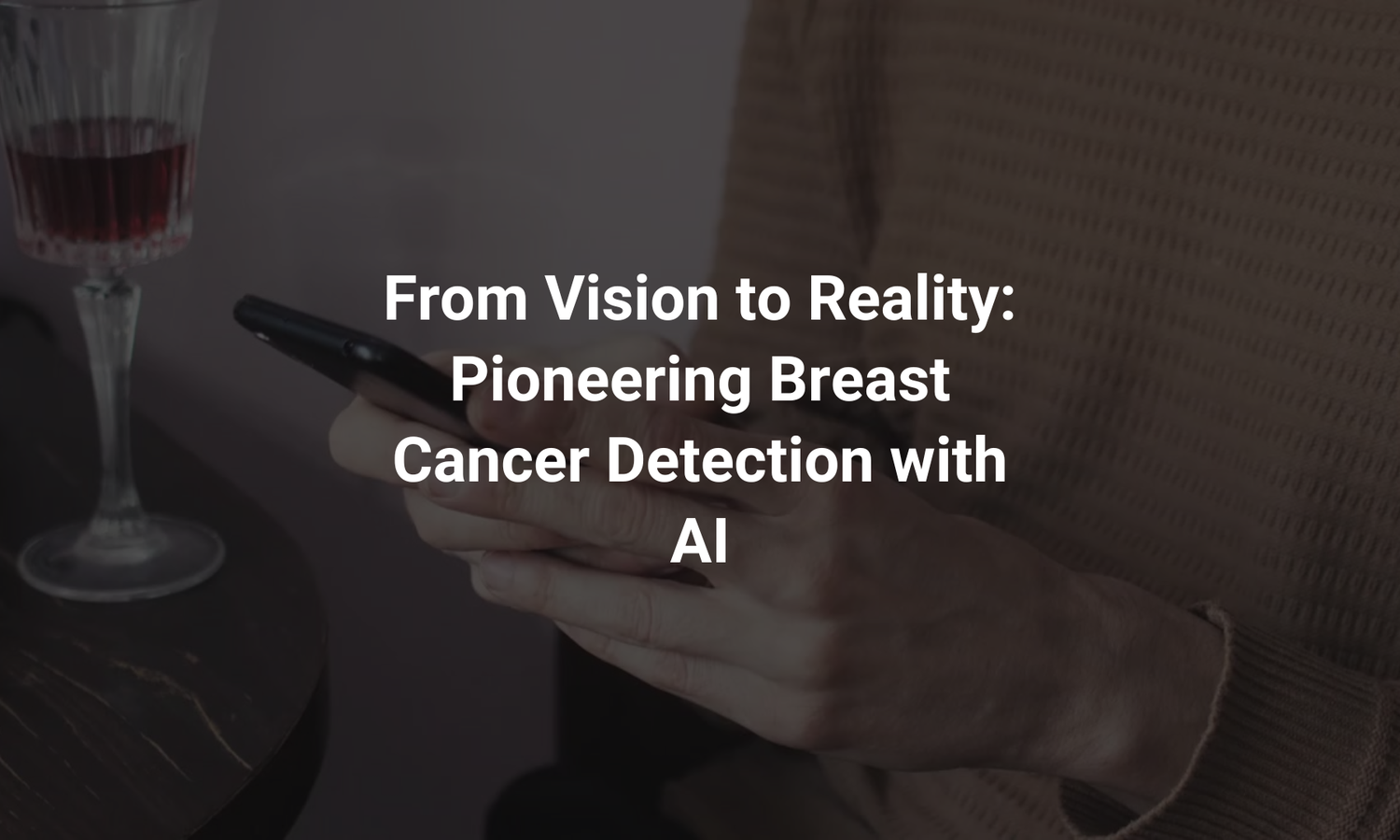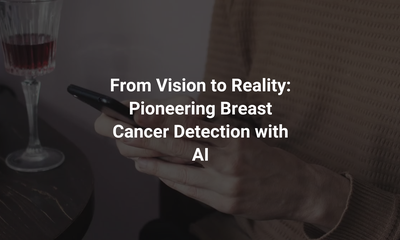AIによる革新的な乳がん検出:ビジョンから現実へ
By khoanc, at: 2024年5月27日21:23
Estimated Reading Time: __READING_TIME__ minutes


はじめに
今日のヘルスケアにおいて、乳がんの早期発見は希望の光であり、治療の成功率と生存率を大幅に向上させます。人工知能(AI)が医学と融合する時代を迎える中、乳がんの検出と診断に革命を起こす可能性は計り知れません。この記事では、AIの力を活用して乳がんの早期発見をよりアクセスしやすく、正確で、効率的にすることを目指した、野心的なプロジェクトの軌跡を語ります。
アイデアの概要
このAIモデルの着想は、シンプルながらも深い気づきから生まれました。医療技術の進歩にもかかわらず、乳がんの検出プロセスは、診断のばらつきや、より個別化され正確な検出方法の必要性など、多くの課題を抱えています。変化を起こしたいという強い思いから、このプロジェクトは、乳がん検出の精度を高めるだけでなく、様々なデータセットや臨床シナリオに適用できる汎用性の高いツールとなるAIモデルの開発という使命に乗り出しました。
基盤の構築
このAIモデル開発の礎となったのは、それぞれが乳がん画像に関する独自の知見を提供する6つの公開データセットの選定と統合です。これらのデータセットには以下が含まれます。
- CMMD:詳細なマンモグラフィ画像とアノテーションで知られています。
- DDSM:長年にわたり乳がんAI研究を推進してきた先駆的なデータセットです。
- INbreast:高解像度の画像と幅広い症例を提供します。
- VinDr-Mammo:専門家のアノテーションが付いた最新の画像を提供します。
- RSNA Screening Mammography Breast Cancer Detection:現実世界のばらつきをAIモデルに課題として提示するKaggleコンペティションのデータセットです。
- Mammographic Image Analysis Society (MIAS) database v1.21:歴史的意義と包括的な症例研究で知られています。
これらのデータセットの多様性と深みは、AIモデルの堅実な基盤となり、幅広い画像の種類、異常、患者の属性から学習することを可能にしました。
課題の克服
この道のりは、障害がないわけではありませんでした。複数のソースからのデータ統合は、画像形式、アノテーション、品質の違いにより大きな課題となりました。さらに、そのような多様なデータセット全体でモデルの精度を確保することは、私たちの創意工夫と忍耐力を試すものでした。もう一つの大きな障害は、モデルの汎化能力と特定の臨床シナリオにおける正確な予測能力のバランスでした。
多面的なアプローチを採用することで、私たちはこれらの課題に正面から取り組みました。データセットを標準化するために革新的なデータ前処理技術が採用され、高度な機械学習アルゴリズムはモデルの学習効率を高めるために調整されました。試行錯誤、協力、そして絶え間ない努力を通して、このプロジェクトはこれらの障害を克服し、モデルの開発を形作るであろう画期的な進歩への道を切り開きました。
明らかになった方法論
「Learning to Remember Beauty Products」のアプローチに触発されて、私たちのAIモデルは、画像を分析するだけでなく、乳がん検出の文脈の中で理解し解釈するように設計されました。この方法論により、モデルは、以下を含む複数のタスクを同時に実行できるようになりました。
- 異常領域の注意マップを予測し、放射線技師に関心のある領域を導きます。
- 腫瘤や石灰化などの異常の種類を高精度で検出します。
- 腫瘍の種類を正常、良性、悪性のいずれかに分類し、早期診断と治療計画に役立てます。
- BIRADSスコアを推定し、所見の標準化された評価を提供します。
- がんの可能性を予測し、リスクの数値化された尺度を提供します。
このマルチタスク学習フレームワークにより、モデルは各データセットの長所を活用し、予測精度と信頼性を向上させることができました。
画期的な成果と洞察
開発プロセスを通じて、いくつかの重要な洞察が得られました。特に、モデルが注意マップを正確に予測する能力は、放射線技師がマンモグラムを解釈する方法に革命をもたらし、潜在的な懸念領域を驚くべき精度で強調しました。さらに、モデルは良性腫瘍と悪性腫瘍を区別する優れた能力を示し、適切な治療方針を決定する上で重要な要素となります。
予備的な結果は有望であり、モデルが乳がん検出の分野に大きな影響を与える可能性を示しました。これらの洞察は、マルチタスク学習アプローチの有効性を検証しただけでなく、モデルを訓練するために多様なデータセットを統合することの重要性を強調し、幅広いシナリオで効果的に動作できるようにしました。
デモ:協働へのゲートウェイ
理論的な開発と実践的な応用の間のギャップを埋めるために、デモプラットフォームが立ち上げられました(AI Breast Cancer Detection Demo)。このプラットフォームは、AIモデルの機能を実証する具体的なショーケースとして機能し、投資家、医師、研究者など、ユーザーがモデルと直接対話できるようにします。デモを通して、ユーザーはマンモグラフィ画像をアップロードし、注意マップ、異常検出、腫瘍分類、BIRADSスコア、がんの可能性予測など、即座に分析結果を受け取ることができます。
デモは単なる実演ツールではなく、貴重なフィードバックを集める手段でもあります。このフィードバックループはモデルの継続的な改善に不可欠であり、チームは現実世界の使用と専門家の洞察に基づいてモデルを洗練し、適応させることができます。

将来の改良と課題
将来を見据えると、AIモデルの改良と拡張への道のりは、エキサイティングでありながらも困難なものです。計画されている改善には、以下が含まれます。
- モデル精度の向上:より多様なデータセットを取り込み、AIと機械学習の進歩を活用することで、モデルの診断精度をさらに向上させることを目指しています。
- ユーザーエクスペリエンスの向上:デモプラットフォームの改善は、ユーザーにとってより直感的で有益なものにすることに重点を置き、モデルの調査結果に関するより明確な洞察と説明を提供します。
- グローバルな利用のための拡張:世界中の異なる人口と医療システムに対応できるようモデルの機能を拡張し、グローバルな影響を与えることを目指しています。
しかし、これらの進歩には、それなりの課題が伴います。
- データのプライバシーとセキュリティ:モデルは機密性の高い健康情報を扱うため、最高のデータプライバシーとセキュリティ基準を確保することが最優先事項です。
- 臨床統合:医療提供者のルーチンを中断したり複雑にしたりすることなく、既存の臨床ワークフローにAIモデルをシームレスに統合します。
- 規制承認:広範な採用のための重要なステップである、臨床使用の承認を得るために、医療機器規制の複雑な状況を乗り越えます。
行動喚起
乳がん検出のためのこのAIモデルの開発の道のりは、医療に意味のある影響を与えるテクノロジーの力の証です。モデルの改良と拡張を続ける中で、私たちは、この取り組みへの協力を、投資を、そして研究を呼びかけます。協力して、早期がん検出の可能性の限界を押し広げ、世界中の患者の転帰を改善することができます。
あなたが研究者、臨床医、投資家、あるいは単にテクノロジーを通じてヘルスケアに革命を起こすことに情熱を持っている人であれば、連絡することをお勧めします。デモを検討し、フィードバックを提供し、このビジョンを実現するためにどのように協力できるかを検討しましょう。
結論
ビジョンから現実へのこの道のりを振り返ると、AIを用いた画期的な乳がん検出への道は、困難でありながらやりがいのあるものであることは明らかです。イノベーションを受け入れ、障害を克服し、協力を促進することで、私たちは乳がんの診断を変革し、早期発見をこれまで以上にアクセスしやすく、正確なものにする瀬戸際に立っています。未来は明るく、協力して、何百万人もの人々の生活に変化をもたらすことができます。
謝辞
このプロジェクトを支援してくれたすべての協力者、メンター、および組織に心から感謝申し上げます。皆様の洞察、専門知識、励ましは、このビジョンを実現するために非常に貴重でした。
イノベーション、回復力、そして協働の物語が終わりに近づくなか、私たちは乳がんとの闘いにおける重要な瞬間に立っています。私たちのAIモデルの開発と改良は、単なる技術的成果の物語ではありません。それは世界中の何百万人もの女性にとって希望の光であり、共通の目的のために優れた頭脳が集まったときに何が達成できるかの証です。
未来を共に抱きしめよう
乳がん検出の未来は、私たちが開発したアルゴリズムやデータセットだけでなく、乳がんを正確かつ早期に検出するという私たちのビジョンを共有する世界中のコミュニティ(臨床医、研究者、技術者、そして擁護者)の手の中にあります。これまでの私たちの旅は強力な基盤を築いてきましたが、私たちを待ち受ける協働こそが、このプロジェクトを最大限に活かす力となります。
イノベーションと協働への呼びかけ
私たちは、イノベーションが実践的な応用と出会い、テクノロジーが人類と出会う岐路に立っています。これは、あなたが医療分野、AI研究、ヘルスケア政策に携わっている場合でも、単に変化を起こすことに情熱を持っている場合でも、私たちに加わるための呼びかけです。あなたの専門知識、リソース、洞察は、ヘルスケアの未来を形作り、早期かつ正確な乳がん検出をすべての人がアクセスできる標準にする力を持っています。
今後の道のりを認めよう
進歩を祝う一方で、私たちの前にある課題を鋭く認識しています。AIを臨床設定に統合すること、複雑な規制環境を乗り越えること、そしてヘルスケアにおけるテクノロジーの倫理的な使用を確保することは、私たちが共に直面しなければならない課題です。これらは単なる障害ではなく、新しい基準を設定し、イノベーションが人類に最も倫理的で、効果的で、思いやりのある方法で奉仕できるようにするための機会です。
この旅に参加しましょう
テクノロジーを通じてヘルスケアを変革し、人命を救う可能性に刺激を受けたのであれば、連絡することをお勧めします。協働、投資、または知識の共有を通じて、あなたの貢献は私たちの進歩を加速し、影響力を拡大するのに役立ちます。 AI Breast Cancer Detection Demo を訪れて、私たちの仕事を見て、フィードバックを提供し、または潜在的なパートナーシップについて話し合いましょう。
結びに
地平線を見据えると、乳がん検出のための私たちのAIモデルの旅はまだ始まったばかりです。克服するすべての課題と達成するすべてのマイルストーンを通して、私たちは乳がんが今日のように脅威をもたらさなくなる世界に近づいています。あなたの支援と協力を得て、私たちは協力してこのビジョンを現実のものにし、人命を救い、未来のヘルスケアを何世代にもわたって形作ることができます。
心からの感謝
もう一度、このプロジェクトに貢献してくれたすべての人に深く感謝申し上げます。私たちのビジョンへの信念、献身、そして努力が、私たちを今日の場所に導いてくれました。乳がんとの闘いにおいて重要な変化をもたらす一歩を踏み出しました。
協力して、私たちは違いを生み出すことができます、そして違いを生み出すでしょう。





